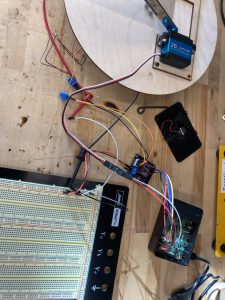There is risk of users not finding the front end intuitive as the front end is not quite ready for testing yet. We still have the risk of the pi’s processing power being a bottleneck for our computer vision. The pressure chamber we plan on using is now a 2 liter soda bottle because it is easy to buy and work with as well as being environmentally friendly. We decided we can push back front end user testing by one week, as Mike is still implementing the front end. This push should overall be inconsequential as there is a lot of time left to test and make changes. Scheduling wise Alex feels like putting lead time for parts on the gantt chart would have been useful in retrospect, but that is also nearly impossible to plan for and would go over the 1 week limit that is allowed on the gantt chart.
Part A was written by Mike:
One global impact is the digital divide. The digital divide is the gap between different groups of people with access to modern technology and those who do not. In order to address this concern, our project needs to be accessible to people who may not have a lot of experience using technology. One way we can achieve this is by making our UI have guides that can help people less familiar with navigating the web. Another global concern could be certain cultures being feeling excluded using our project. In order to mitigate this, we are making the UI as simple as possible, making it culturally neutral and universally appealing. Overall, no matter where you are in the world, as long as you have a device that can access the internet we want pong pal to be a fun experience.
Part B was written by Seung Yun:
Water pong and its variants are a huge part of American social culture. Quoting from the book “The Book of Beer Pong”, the game “has transcended its obscurity of dorm rooms … it’s infiltrated bars, tailgates, corporate parties, and even wedding receptions … the very heart of the American spirit”.
PongPal lowers the barrier of entry to this game, allowing anyone around the world to partake in this cultural tradition. Moreover, it promotes inclusivity by allowing anyone to play the game with internet access.
Part C was written by Alex:
Our design for PongPal includes using a 2 liter soda bottle for the pressure compartment, this demonstrates our resolve to use sustainable materials wherever possible. We also reuse a raspberry pi 5 and an intel realsense L515 LIDAR from previous years showing that it is possible to make an impactful project while also remaining environmentally aware. Overall, PongPal is fairly orthogonal to environmental factors as it is essentially a substitute to a player in a game of pong. One could say that it is environmentally friendly since it only really requires electricity and compresses its own air (our initial designs used compressed air), but the human(s) that it replaces are ultimately also resource efficient.




